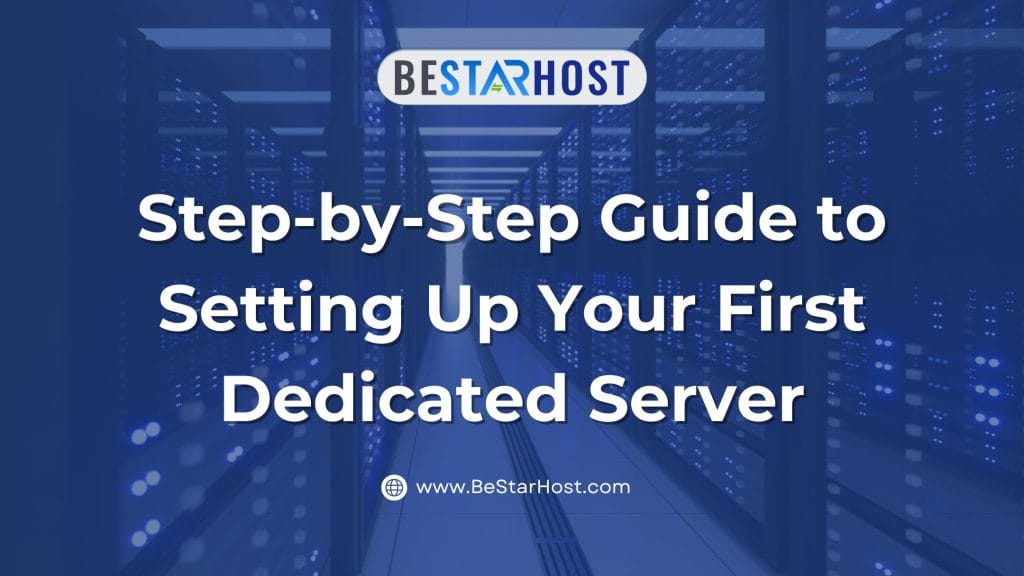
Introduction
Setting up a dedicated server can be a game-changer for businesses looking to gain full control over their hosting environment. From understanding hardware requirements to securing your server and optimizing network performance, each step contributes to a more stable and secure server environment. This guide provides a comprehensive, step-by-step breakdown to help you navigate the process smoothly.
1. Determine Your Server Hardware Requirements
Before configuring a dedicated server, assess your hardware needs based on your specific application or business goals. Consider factors like CPU power, memory, storage, and bandwidth. For instance, high-traffic websites or applications with extensive data processing needs will benefit from multi-core processors and higher RAM capacities, while smaller projects may have more modest requirements. Planning the right hardware foundation ensures your server performs reliably from the start.
2. Choosing and Installing an Operating System on Your Dedicated Server
With your hardware requirements set, the next step is selecting and installing an operating system (OS) that aligns with your application needs. Linux distributions, such as Ubuntu or CentOS, are popular for web hosting due to their stability and open-source support, while Windows Server may be preferable for applications requiring specific Microsoft technologies. Installing the OS on your dedicated server involves creating a bootable drive or utilizing your hosting provider’s OS installation tools. Follow your OS provider’s installation prompts to set up system partitions, configure user accounts, and install essential system files.
3. Dedicated Server Configuration Basics
Configuring a dedicated server after OS installation involves setting up necessary software, services, and security protocols. Begin by installing web server software like Apache or Nginx if you plan to host websites. You might also want to install database management software like MySQL or PostgreSQL depending on your application requirements. During this phase, it’s essential to define user roles, permissions, and access levels to control who can manage, view, or modify specific server resources. This foundational setup optimizes your server’s functionality and prepares it for secure, efficient operations.
4. Securing Your Dedicated Hosting Setup
A critical step in dedicated server configuration is implementing security measures to protect your data and applications. Start by configuring a firewall to control traffic in and out of your server and enabling SSH (Secure Shell) for encrypted remote access. Regularly updating software and operating systems minimizes the risk of vulnerabilities, while strong password policies reduce the chances of unauthorized access. Additionally, setting up DDoS protection can defend your server against traffic-based attacks, safeguarding your hosting environment and providing peace of mind for users.
5. Network Optimization for Servers
To ensure that your server’s network operates efficiently, network optimization is essential. Start by configuring DNS (Domain Name System) settings to improve domain name resolution speeds. You can also implement caching solutions, such as a content delivery network (CDN), to reduce server load and increase website load speeds for users in different locations. Fine-tuning network settings, including adjusting packet size and monitoring network bandwidth, can further enhance performance, making your dedicated server responsive and capable of handling traffic spikes.
6. Testing and Monitoring Your Server Performance
Once the dedicated server configuration is complete, testing and monitoring are crucial for maintaining optimal performance. Use monitoring tools like Nagios or PRTG to track CPU, memory, and disk usage, allowing you to identify any performance issues early on. Load testing can also simulate high-traffic scenarios, revealing potential bottlenecks that may need adjustment. Set up alerts for critical events, such as unexpected server downtimes or high CPU usage, so you can address issues before they impact user experience.
7. Regular Maintenance and Updates
Ensuring your server remains in peak condition requires ongoing maintenance. Regular updates to your OS, web applications, and security software are essential to protect against vulnerabilities. Scheduling routine backups for all data on your dedicated server is also a good practice, helping you recover from data loss quickly. Cleaning up unused files, optimizing database storage, and periodically reviewing firewall rules are further maintenance steps that can improve server stability and performance over time.
Conclusion
Setting up a dedicated server may seem complex, but by following these structured steps, you can create a powerful, secure, and efficient server environment tailored to your needs. From hardware selection and OS installation to security configuration and network optimization, each step is vital to ensuring the long-term success of your hosting setup. With BeStarHost’s dedicated server solutions, you’re equipped to make the most of your server investment.
Leave a comment
You must be logged into post a comment.

Comments: 2
Pingbacks and Tracebacks
[…] host several sites effectively and securely. For more insights on server management, explore our server management tips or reach out to our team at support@BeStarHost.com for expert […]
[…] hosting upgrade is more than just an additional expense—it’s an investment in your website’s performance and […]